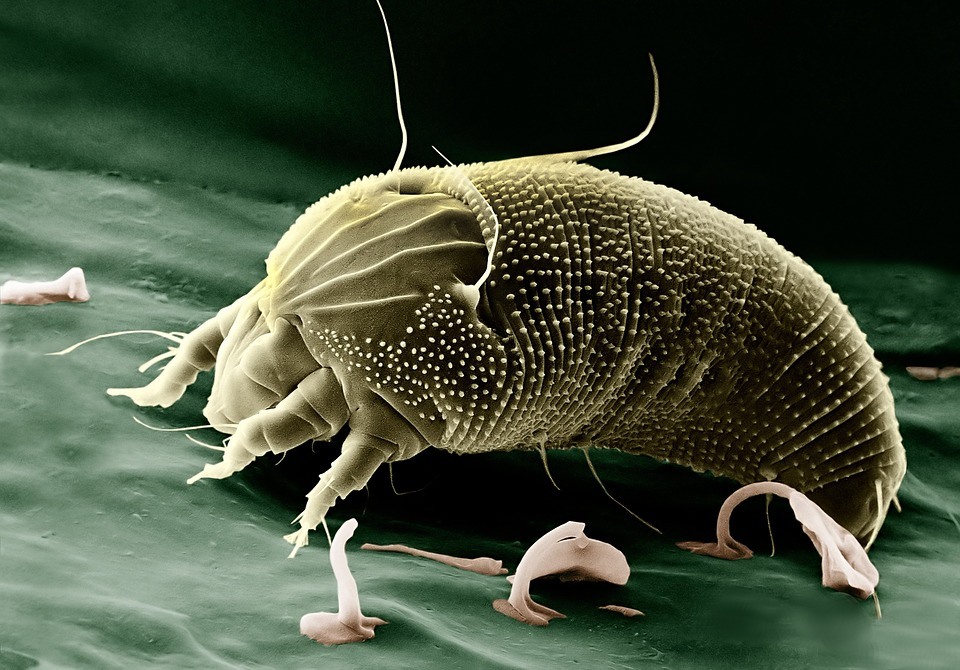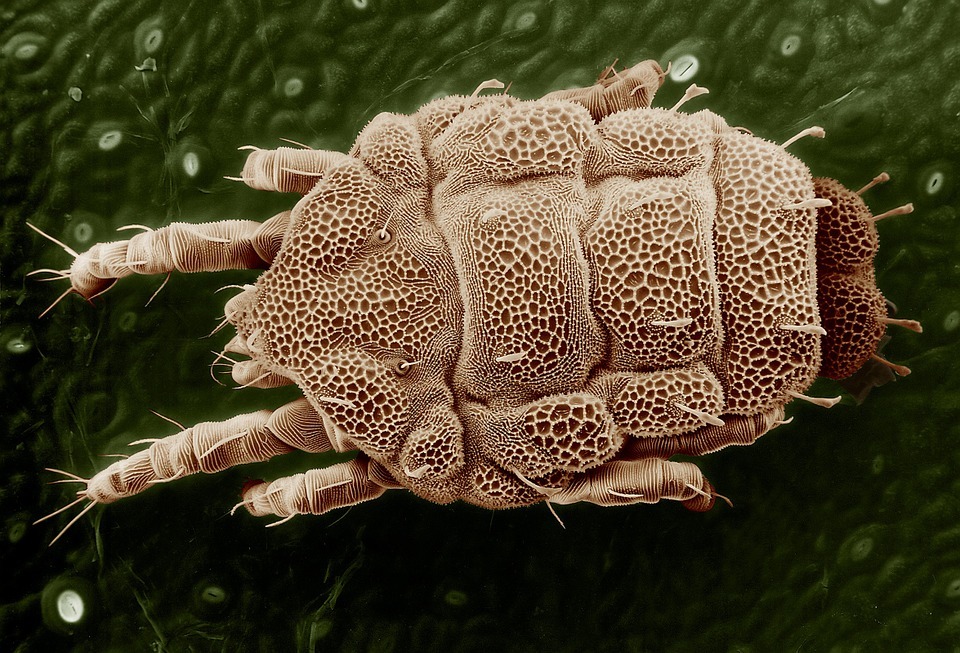Parasites and Mange in Pets
Share

Nothing strikes fear into the heart of a pet owner more than parasites and mange. The fearsome little microscopic creatures can wreak havoc on a host thousands of times larger than itself. They can create rapid fur loss, systemic skin conditions, and in extreme cases, even death.
This is a look at the more common types of mites, mange and pests that you may encounter in people and pets.
A parasite is any organism (a flea, mite, or tick, for example) that spends a significant portion of its life in or on the living tissue of a host organism (your pet) and which causes harm to the host without immediately killing it. Some parasites are relatively innocuous, some are not, and some can cause serious skin problems.
Mighty Mites and Mange
Mites are microscopic creatures resembling tiny spiders. These little creatures rarely discriminate against any species and as little as they are, they can wreak havoc on the lives of people and pets. For the purposes of this article, we’re focusing our attention on three types of mites.
- Demodex mites (family Demodicidae) are parasites that live in or near the hair follicles of mammals, including humans.
- Cheyletiella mites look like tiny spiders under a magnifying glass and are often called “Walking Dandruff” because upon close inspection it seems like little flakes of dry skin are actually moving about.
- Sarcoptic mange mites (family Sarcoptidae), which burrow under the skin.

Sarcoptic Mange Mites
Sarcoptic mites are very nasty critters. They are often referred to as “scabies” or “red mange” due to their coloring.
These creatures tend to focus their attention on dogs that have weak immune systems or that are undernourished.
Infestations of these mites are highly contagious across species and produce intense itching, reddening of the skin, thinning of the hair (alopecia) and development of crusts and scabs. Bacterial skin infections commonly occur in the inflamed, irritated skin.
Sarcoptic mite infestation, or mange, is frequently misdiagnosed as allergic dermatitis by even very competent and experienced veterinarians. This is due to the mites ability to burrow right down into the skin where they are virtually undetectable by skin scrapings.
Sarcoptic mites prefer skin with little hair, so they are most numerous on the ears, elbows, abdomen and hocks. As the disease spreads, hair is lost and eventually the mites occupy large areas of skin.
The Problem with Prednisone
Sadly, many dogs are treated with cortisone or prednisone for a supposed allergic dermatitis (often diagnosed as alopecia X) when, in fact, these Sarcoptic mites are the cause of the pruritic or inflamed skin. The unnecessary cortisone further reduces your pets ability to recover by reducing immune function. The condition is then made much worse with recovery taking much longer.
The only real benefit of prednisone is the quick relief your pet will receive from itchy conditions, but this relief will not last. Prednisone will suppress the immune system and create a “perfect storm” in your pet’s inflammatory response. Recovery becomes much more difficult when multiple doses of cortisone or prednisone have been administered.
[load_module id=”210″]Demodectic Mites
Then there are Demodectic (or Demodex) mites, which cause another kind of mange. These mites are found in small numbers in the hair follicles of normal pets. In stressful situations, however, they proliferate, and large numbers inhabit the skin and hair follicles.
The good news is that Demodex mites can easily be seen on a skin scraping viewed under the microscope. The not so good news is that generalized demodicosis is serious and often difficult to treat.
Large areas of the body may be affected, and often the affected areas are also infected by bacteria. In these cases, the skin is red, crusty and warm, and has many pustules. It may bleed easily, has a strong, rancid odor and can cause serious issues in the skin.
 Fleas, Flies, Chiggers, Ticks, and Gnats
Fleas, Flies, Chiggers, Ticks, and Gnats
When a pet parent sees her dog scratching and biting at itself, the first thing she thinks is “Oh no! Fleas!” Chiggers, deer flies, and gnats (sometimes called No-See-Ums) can cause your pet to itch, but generally don’t create systemic skin problems like fleas and ticks.
Repeated exposure to fleas can trigger a hypersensitivity to the bite of even a single flea, leading to an allergic response, and ultimately to hot spots or worse.
Tick bites seldom trigger an allergic reaction, but can leave a slow-healing lesion.
DERMagic products stop infections associated with parasitic infestations, and kill certain parasites outright.


 Other Articles You May Enjoy:
Other Articles You May Enjoy:







